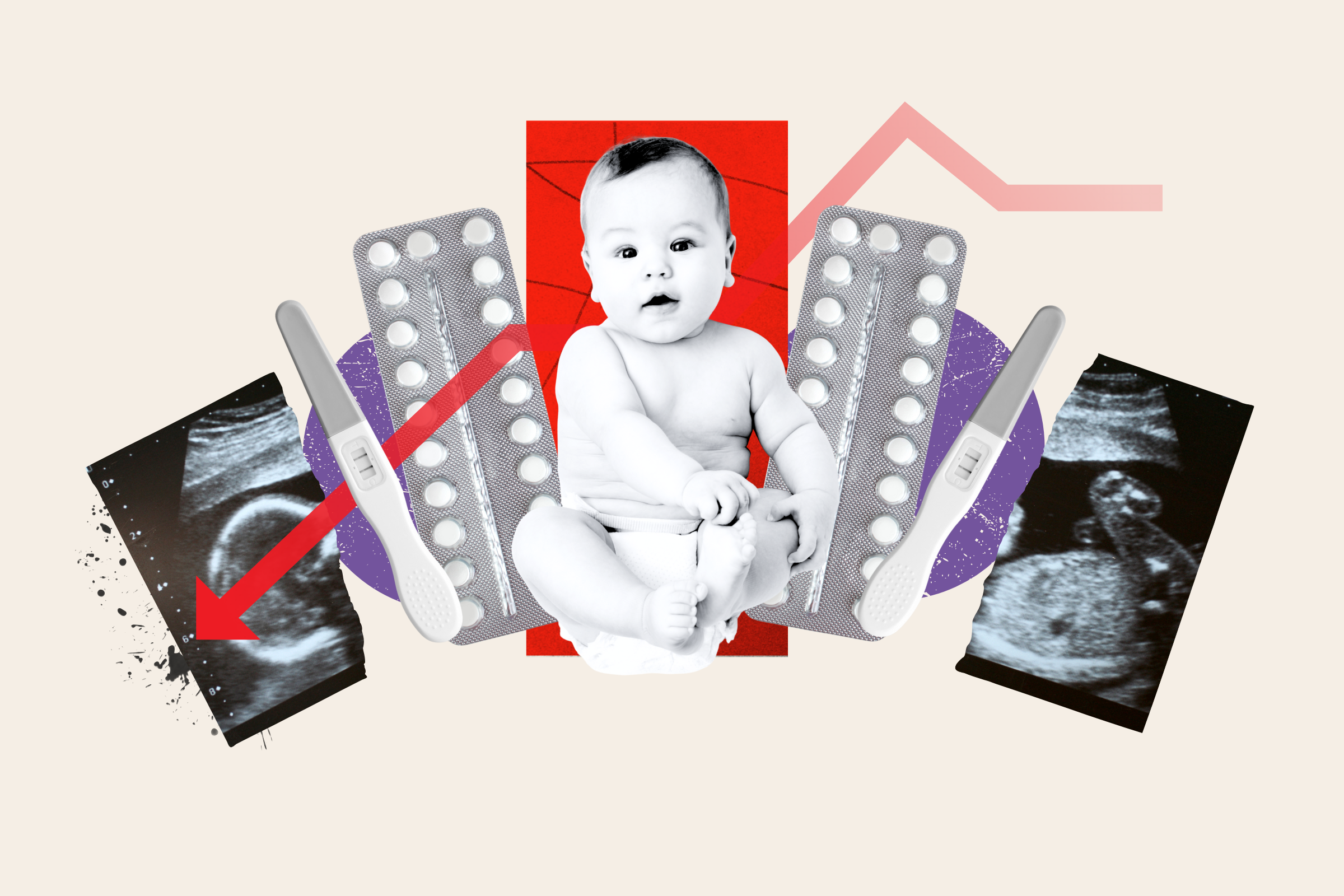
Governments all over the world are trying to reverse the birth rate decline, with almost every country on the planet facing the challenges that may come with fewer babies being born.
A major issue is the prospect of an aging population, where the number of elderly exceeds the working-age individuals who support them.
For example, in the United States, the fertility rate (the average number of children a woman has in her lifetime) is now projected to average 1.60 births per woman over the next three decades, according to the Congressional Budget Office’s latest forecast released this year. This is well below the replacement rate of 2.1 births per woman required to maintain a stable population without immigration.
President Donald Trump’s administration has made the birth rate one of its priorities—it has explored giving women a “baby bonus” of $5,000, according to an April New York Times report, while lawmakers have also looked at making childbirth free for privately insured families and tying states’ transportation funding to their birth and marriage rates.
Financial issues, family policies and cultural shifts are generally cited as the main reasons for the decline in births, which Newsweek has broken down in detail here.
But some of these cultural shifts have been positive, several experts have told Newsweek, arguing that while the declining birth rate brings challenges, it is also illustrative of societal progress—namely choice.
More Choice
“The decline in birth rates has been driven primarily by fewer births to women in their teens and early 20s, and these are births that are very often unintended,” demographer Karen Benjamin Guzzo told Newsweek.
“Unintended births are more often associated with poorer parenting and child maltreatment. So, people being able to avoid having births when they themselves would say they were too young, didn’t have enough money, or weren’t with the right partner—that’s all good news.”
“Young adults are less often having casual sex, and they’re more often using highly effective methods of contraception, like IUDs,” she continued. “Contraception allows people—but especially women—to plan their pregnancies so they can get education, have careers, find the right partner before having kids. It allows families to space their children the way they see fit.”
Indeed, American mothers aged between 15 and 19 have seen the most consistently steep fall in the last 50 years.
In 1975, there were 599,926 teen births in America—more than double the teen pregnancies recorded in 2024 (136,376), according to the U.N. Population Division.
Global health economics professor Margaret Anne McConnell spoke about this at Harvard T.H. Chan School of Public Health’s debate on the topic on August 19.
“Any time we see people being able to make fertility choices that suit their family, I think that’s a success,” McConnell said. “I think people choosing to have children later in life is also a success … To the extent that we can make it possible for people to reach whatever their desired family size is, I think that that would be a societal priority.”
She told Newsweek that instead of focusing on “a number,” we should “trying to get people closer to what their fertility preferences are, even if those are changing.”
“There are a lot of people for whom reductions in fertility represent their true preferences,” she said. “They were able to go to college and get a higher degree or take longer to choose a partner that they feel better about and those have very many positive elements. But I think the other are sort of underappreciated.”
More Help for Those Who Want More Children?
McConnell said that acknowledging greater reproductive choice should also mean helping families who want more children than their circumstances allow.
“I think there are many families that have fewer children than they would like, and so I think there are different ways you could address making it more available and equitable for people to receive help if they’re not achieving their ideal fertility … making it easier to have children,” she said.
In June, the United Nations Population Fund (UNFPA) surveyed 14,000 people across 14 countries and found that about one in five reproductive-age adults do not expect to have the number of children they want. Among adults aged 50 and older, over 31% said they had fewer children than they ideally wanted.
Some 39 percent said this was because of financial limitations and one in five said it was because of their fears about the future, such as climate change, wars and pandemics.
McConnell called for solutions that, instead of pushing back against choice, “would solve the problem for whom it is a problem.”
“If you look at it from the lens of trying to get people to their fertility preferences, which is how I think we should look at it, there are a lot of areas where you could improve and have more babies if you supported people,” she said.
What Is the Answer?
There are many different approaches to trying to increase the number of births taking place, many of which include pushes for more family orientated policies, such as longer parental leave and subsidized child care.
Demographers tend to agree that these have “the potential to affect fertility,” as economist Phillip B. Levine said in a July study, but measures like this have not yet had significant success.
Newsweek previously investigated Norway, which is considered a global leader in parental leave and child care policies, with the United Nations International Children’s Fund (UNICEF) ranking it among the top countries for family friendly policies.
Norway offers parents 12 months of shared paid leave for birth and an additional year each afterward. It also made kindergarten (similar to a U.S. day care) a statutory right for all children age 1 or older in 2009.
Yet, Norway’s fertility rate has dropped drastically from 1.98 in 2009 to 1.44 in 2024, according to official figures. The rate for 2023 (1.40) was the lowest recorded fertility rate in the country.
McConnell said that solving the “fertility rate crisis” was “too much to put on individual family choices,” and urged governments to also look at immigration policy.
Demographer William Frey, a senior fellow at The Brookings Institution, is one of several who have looked to immigration as a possible solution as well.
“Immigrants not only add to overall population growth but also make the population more youthful,” he previously told Newsweek. “That’s because immigrants and their children, together, tend to be younger than the native population.”
Spain recorded 322,034 births in 2024—1,378 more than in 2023, per National Statistics Institute (INE). Population experts say immigration is helping offset the effects of very low fertility, with 31.3% of 2023 births to mothers born abroad
This marks the first uptick in births after 10 straight years of decline, as Spain turns to immigration to bolster the economy and its welfare system.
Spanish Prime Minister Pedro Sánchez told Parliament in October 2024: “Spain needs to choose between being an open and prosperous country or a closed-off, poor country. It’s as simple as that.”
Nearly 3 million foreign-born workers represented 13 percent of the country’s workforce in 2024, according to Spain’s Ministry for Social Security and Migration.
Uniquely, many of these migrants are from Latin America—with shared language and cultural ties helping to ease integration. Still, there are also large groups from Morocco, Romania and other EU countries.
“The short answer is that there are no easy fixes,” Levine and his co-authors said in their report. “There is no single policy lever that will reliably boost fertility.”
“There is still so much more we need to know before we can provide something resembling a definitive answer,” they said
Read Newsweek’s Full Interview With Margaret Anne McConnell Below
Could you break down the positive cultural shifts that the declining birth rate is illustrative of?
“I think the thing to note about the sort of declining birth rates that is important in understanding them is that they’re sort of happening across many different cultural settings and across many different sorts of social and governmental structures.
“I think there are obviously many, many things that have changed about families and sort of the expectations around sort of what it looks like to have a family—for a long time being very rooted in religious cultural expectations, and some of those, in many different places, are easing, and there are a lot more choices.
“There are a lot more choices in particular for women, and there are really big trend changes in trends in terms of education, right? So there’s massive differences in how likely people are to get college education, to get higher education, and those decisions have a big impact on when people start their fertility. And therefore, of course, if you start having children at a later age on average you may end up having fewer children.
“So a big component of this shift just has to do with a certain overall change in what it looks like to have a family and the timing of other educational and career advancement.”
Why do you think it is important to notice this aspect of the declining birth rate?
“I think in this conversation, we were very focused on the outcome, right? Like, you know, what is the birth rate as a number, which doesn’t tell us the whole picture. Whereas what we should probably be thinking about is trying to get people closer to what their fertility preferences are, even if those are changing, right?
“There are quite a few—there are a lot of people for whom reductions in fertility represent their true preferences, right? They were able to go to college and get a higher degree or take a longer time to choose a partner that they feel better about, and those have many positive elements. But I think there are other things that are underappreciated.
“If you look at it from the lens of trying to get people to their fertility preferences, which is how I think we should look at it, there are a lot of areas where you could improve and have more babies if you supported people.
“So I think there are many families that have fewer children than they would like. And so I think there are different ways you could address that—making it more available and equitable for people to receive help if they’re not achieving their ideal fertility. And potentially making it easier to have children across many dimensions—economic, sort of social, cultural—would help people who would like to have more children but maybe aren’t doing it.
“Now I don’t think that will solve the ‘fertility crisis,’ right. I think in the sense that there’s a lot of people paying into a system of social benefits and those benefit from that system. But I think that’s sort of too much to put on individual family choices and there are other ways to think about addressing that, you know, for example how we think about immigration policy and sort of what the population looks like.”
Do you think the current rhetoric around the declining birth rate and the dangers of it is harmful?
“So many of our conversations are not very nuanced, but this one, you know, sort of particularly so. I think the part of it that feels somewhat problematic to me is that it doesn’t usually start from the point of view of helping people get to the family structure that they want, which is where I think the conversation about fertility should start.”
Can you speak a bit more about how encouraging choice could also be beneficial for the “cause” to reverse the birth rate decline?
“Globally, it’s certainly true that there are many, many families that would like to have more children than they have, right? We’re very focused on sort of the opposite end, but less focused on families that would really like to have two or three children and don’t either because they can’t, because there are fertility challenges.
“And I think that’s also another challenging problem, right? I think one thing I would say is that it is not very easy for all different kinds of families to access fertility treatment. It tends to be something that is much easier to access for higher-income families and in higher-income country settings, right? I think fertility treatment is really not available in many countries, which is also sort of a major, major challenge.
“But I think there’s another hypothesis which has to do with, ‘I might rather have more children, but it feels very economically difficult.’ Most countries haven’t had much success with large incentives to increase the number of children.
“But I do think there is a factor of like general costvofvliving and housing and the sort of cost of child care—there’s some evidence from economic studies that those kinds of things, again, will not solve the ‘fertility crisis’ but they do have an impact on whether people have the number of children they would want to have.
“These kinds of solutions would solve the problem for whom it is a problem.”
How do you think societies should go about tackling declining birth rates?
“I think it is something to grapple with, surely. And in different settings, the size and scale of the problem is quite different … Anytime you have to make a drastic reorganization of your benefits system, you’re in major trouble because nobody does anything very quickly and any drastic reorganization is going to be very hard to do. So I think there is something to grapple with.
“I think there are other ways to think about this: different immigration policies, for example. But I think the way to orient this is also to ask, ‘Why don’t people want to have children in our societies and listen to their answers?’
“Some of what has been tried hasn’t worked, but I do think it would be really valuable to understand more what it is that makes people decide that having a larger family within the society they’re living in is not something they would want. And understanding that and addressing that would probably make everyone in society somewhat better off and more thriving.
“So it is certainly a major challenge to think about the aging structures of society. But I think the framing should be, ‘How to think about creating structures and supports that make people want to have children.’ But I think that’s proved to be quite challenging. So I don’t think this is an easy problem. It’s probably why people are interested in it.”



